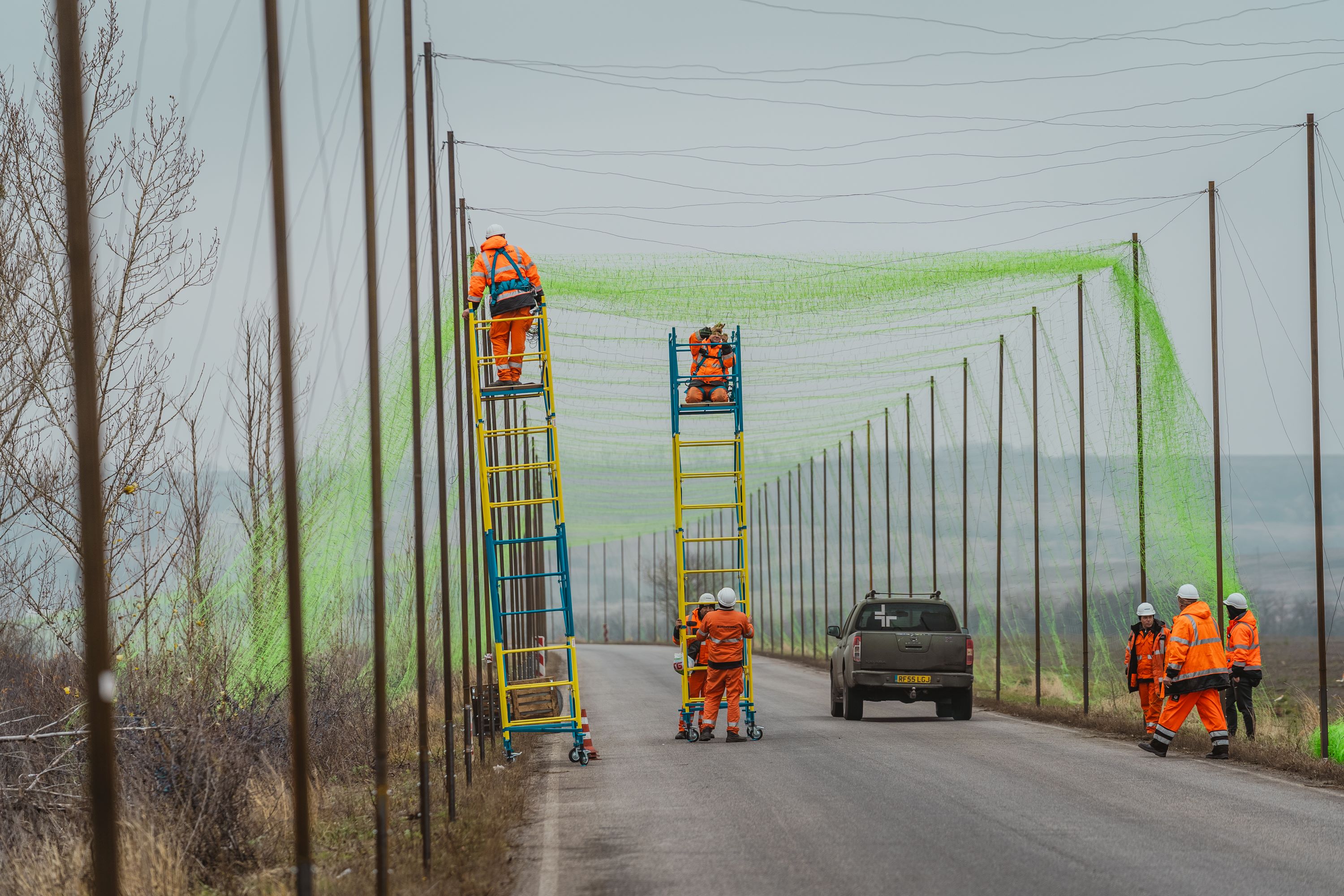Autostrada is the only civilian infrastructure company building protective structures made of anti-drone nets

These works were previously carried out exclusively by the military. Thanks to well-established processes, in-house production facilities, and a modern equipment fleet, Autostrada specialists complete installation three times faster. This allows nearly 500 meters of roadway to be covered with anti-drone netting per day in the Pokrovsk direction.
Protecting logistics routes means protecting lives. These roads are used daily by military convoys, evacuation vehicles, ambulances, and humanitarian aid trucks. Every protected meter is a chance to save lives and ensure uninterrupted frontline supply. The structures create an effective barrier against drone attacks — including FPV drones and kamikaze drones.
Several specialized Autostrada teams work on the site simultaneously:
-
Barrier crews install steel channels that serve as structural supports.
-
Road crews attach profile pipes, tension wire, and mount the anti-drone net.
Due to the heavy traffic that complicates operations, an additional crew works outside the main site, pre-assembling large net sections and metal components to accelerate installation on location.
Before work begins, pyrotechnic units thoroughly inspect the roadside. Only after receiving official demining clearance do our teams proceed. The work zone is only five meters from the edge of the pavement — going further is prohibited due to mine risks. In reality, the work is performed in a “kill zone”, under constant threat of strikes. Reconnaissance drones hover overhead; nearby, Guided Aerial Bombs and Lancet drones land regularly. Despite this, the work does not stop. Every reinforced meter of road contributes to saving lives, ensuring safety, and strengthening defensive infrastructure.
Autostrada is also building protective systems for first- and second-level energy infrastructure facilities. These works are carried out in high-risk zones — these are DSC facilities, and for safety reasons, we do not disclose locations or technical details. However, we can state that around ten direct hits have already been recorded on these facilities. Second-level protective systems, where construction has been completed, have repeatedly proven their effectiveness: they withstood strikes and prevented critical damage.
Our teams work under constant danger, often under targeted shelling. During daily air raid alerts, we rapidly evacuate people and equipment from sites to minimize risk and protect lives.



